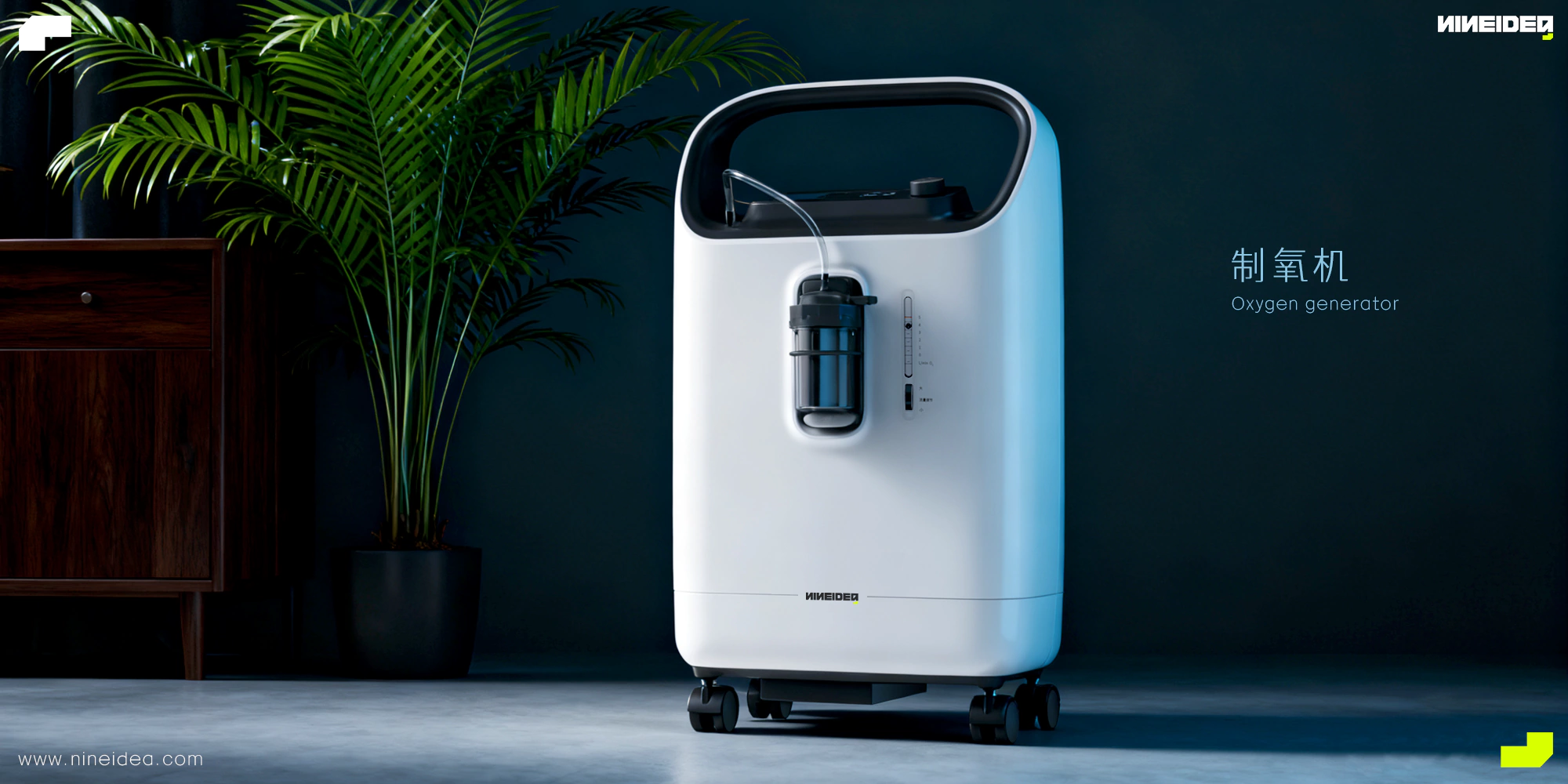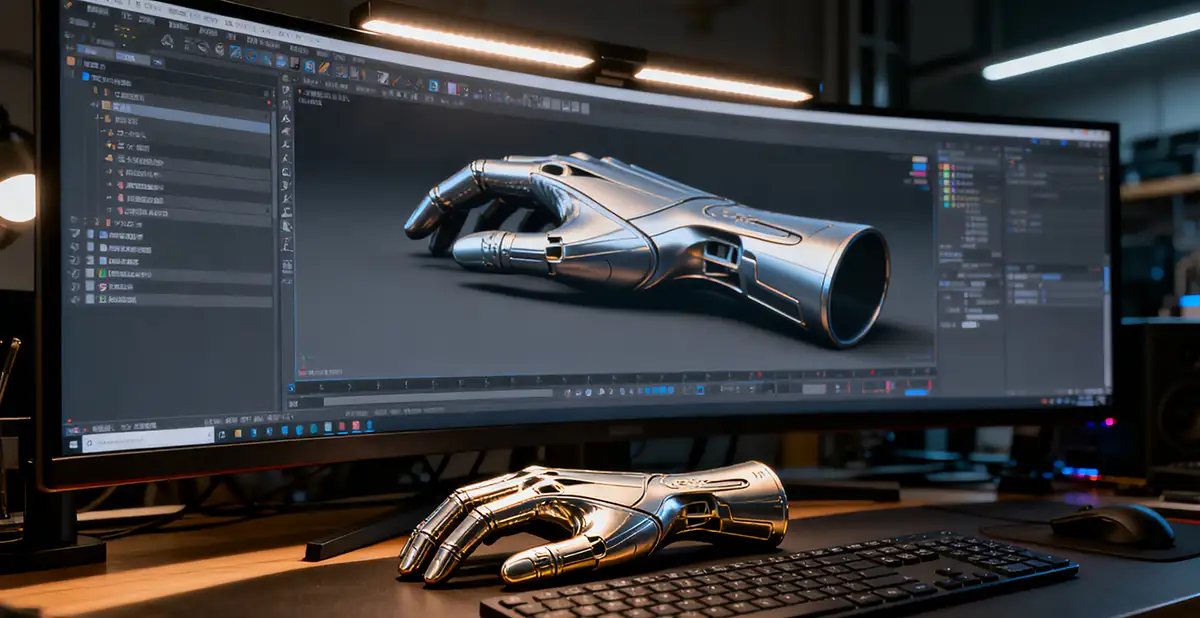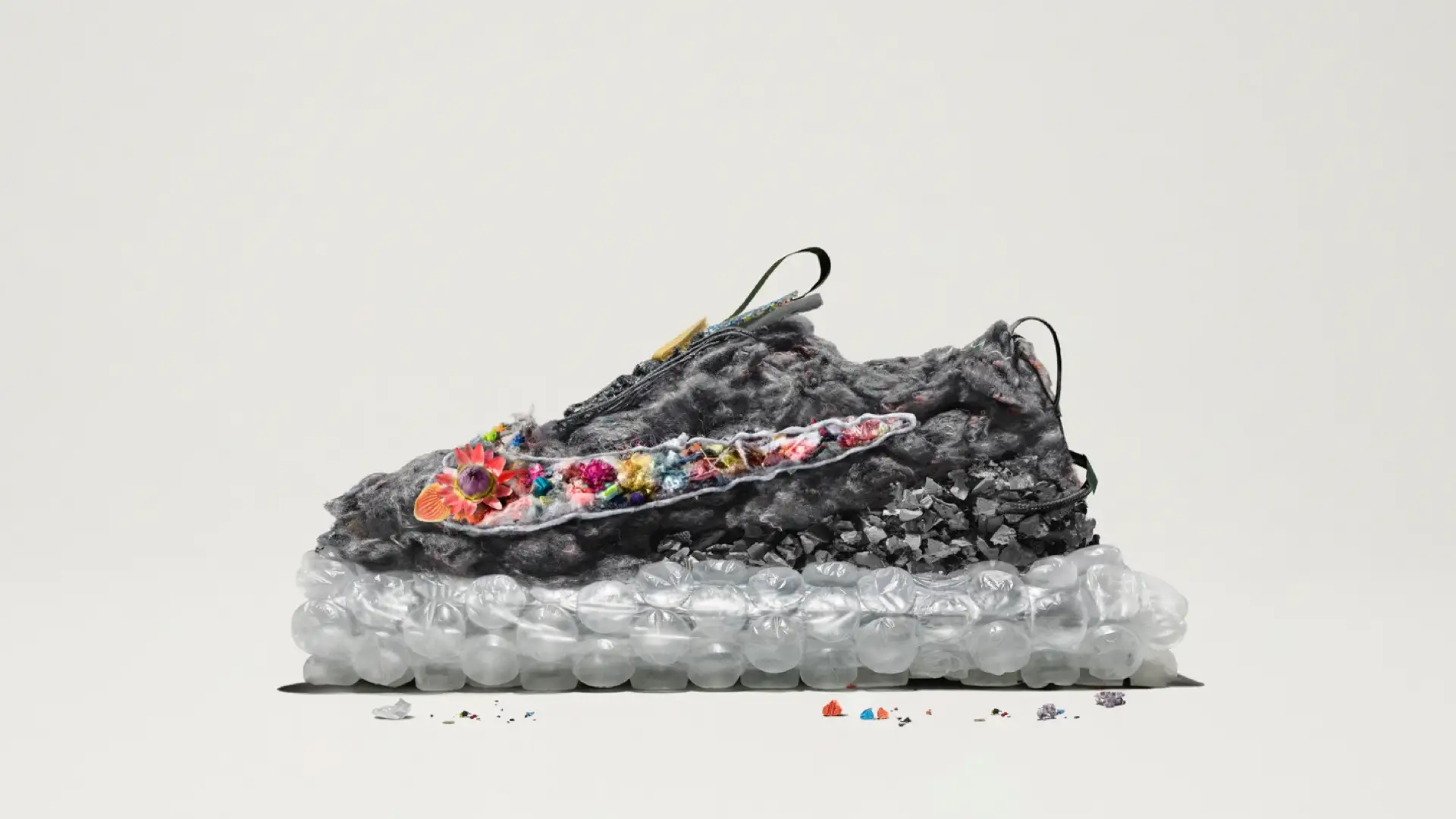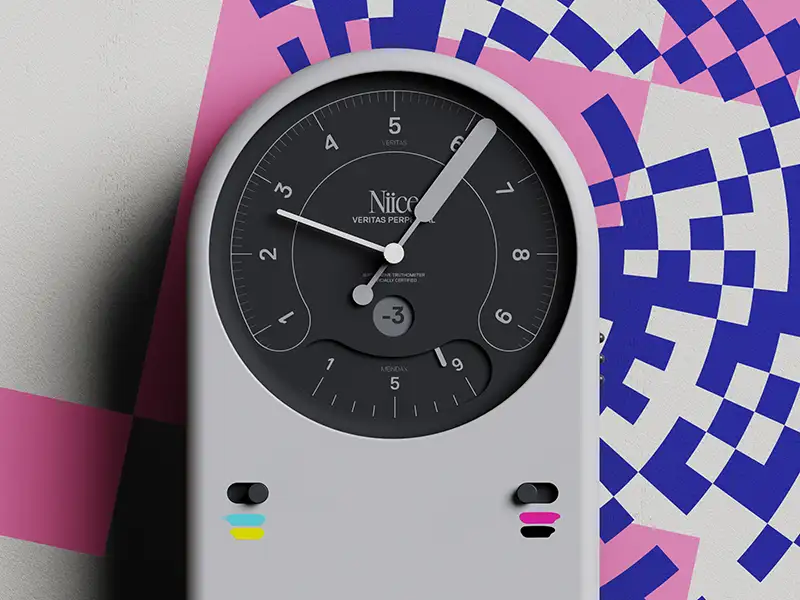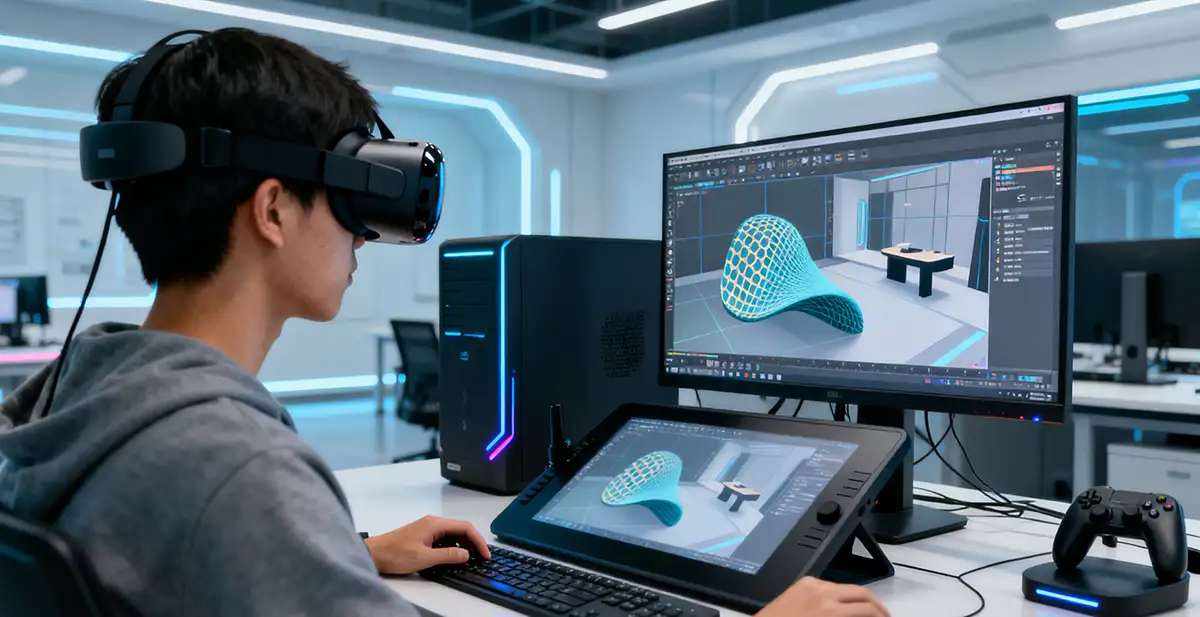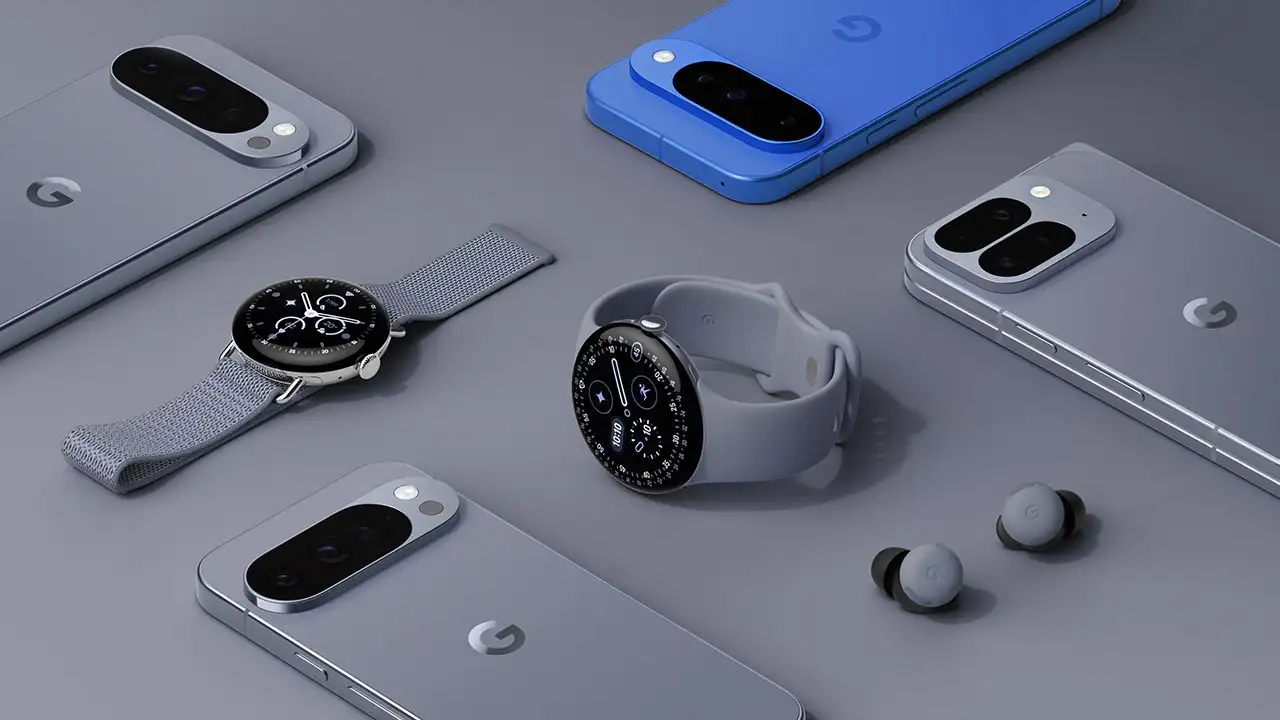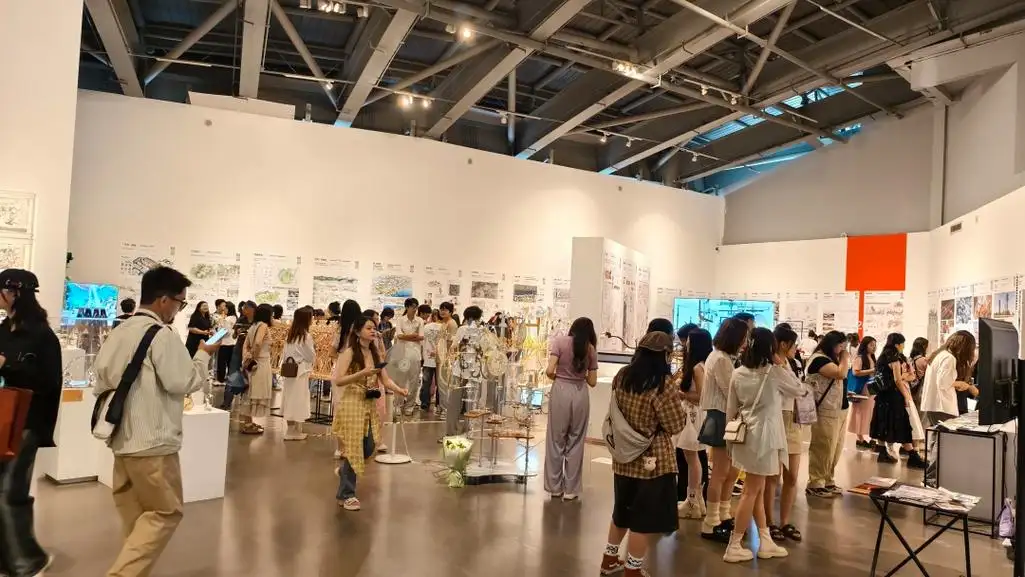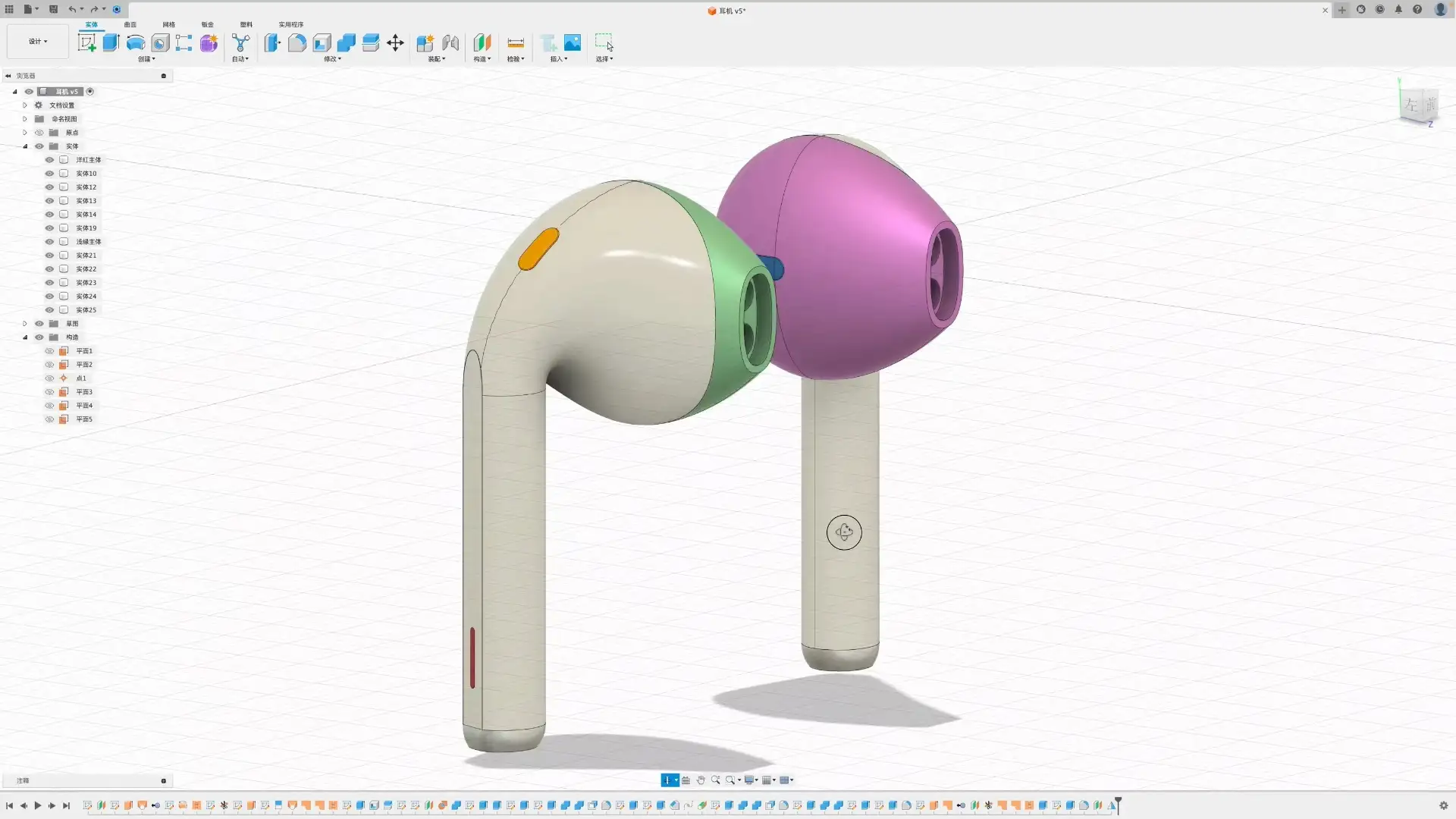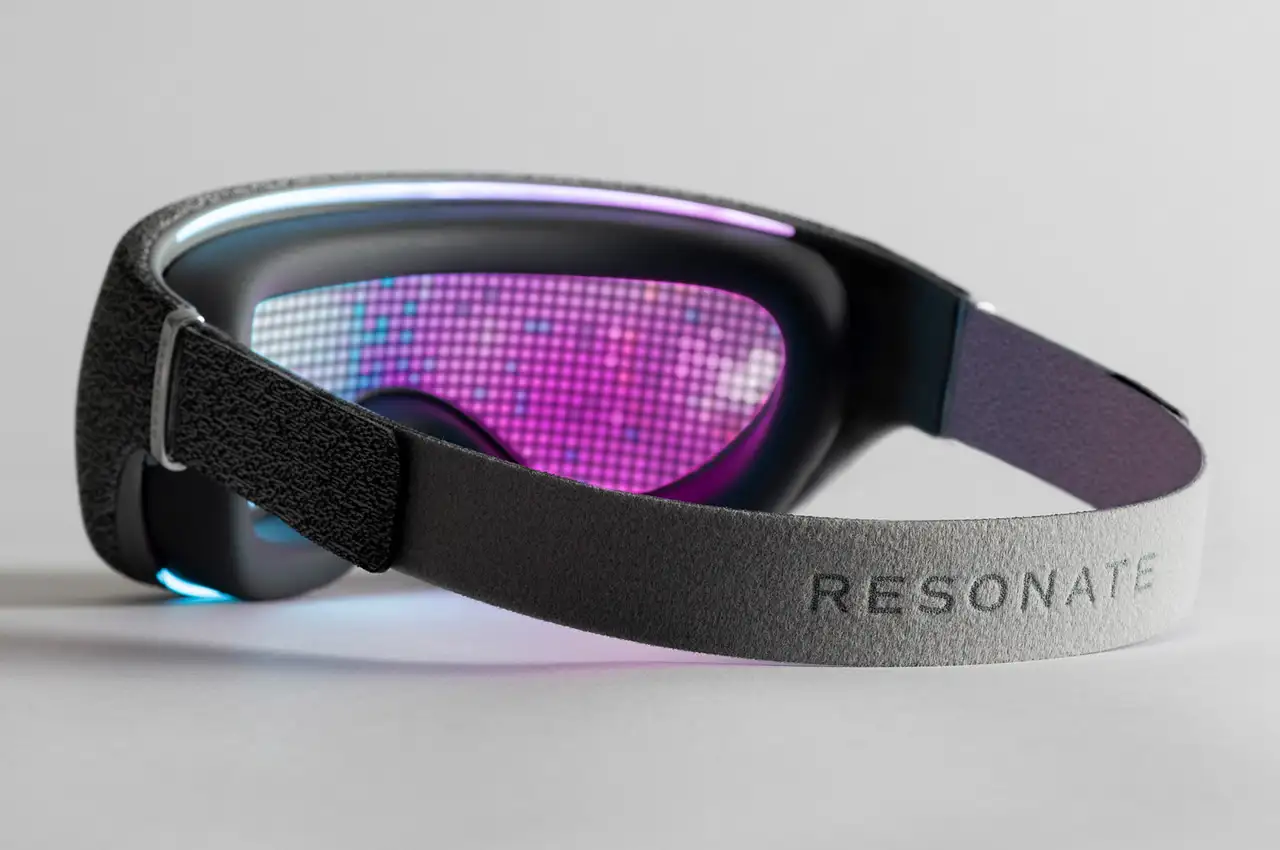NINEIDEA:年轻的工业设计新人们,当你们怀揣着对工业设计的热忱踏入这个行业时,我仿佛看到了二十年前那个在绘图板前通宵勾勒方案的自己。这个行业如同一片充满可能性的森林,既有繁花似锦的机遇,也有需要披荆斩棘的挑战。以下这些凝结着实践血泪的建议,希望能成为你们前行路上的引路火把。
一、走出 “设计神话” 的迷雾,建立真实的职业认知
请放下那些关于 “天才设计师灵光乍现” 的浪漫想象。工业设计本质上是理性与感性的平衡艺术,是商业价值、用户需求、技术实现的三角博弈。我曾在职业生涯早期沉迷于炫酷的形态设计,却因忽略模具成本导致方案被毙。后来逐渐明白:真正打动人的设计,是能让工程师说 “这个结构可实现”、让市场人员说 “这符合用户痛点”、让老板说 “这个成本可控” 的方案。
建议你们从入职第一天起就养成 “三问” 习惯:这个设计解决了什么具体问题?用户使用场景是否真实存在?生产环节可能遇到哪些限制?记住,当你在电脑前调整曲面曲率时,隔壁车间的工人正在为公差 0.1mm 的零件发愁 —— 设计从来不是空中楼阁。
二、夯实基本功:从 “技法匠人” 到 “思考者” 的必经之路
(一)手绘:保持每天 30 分钟的速写习惯
不要相信 “现在都用 3D 建模,AI出图,手绘没用” 的论调。我至今保留着每天画草图,不是临摹,而是快速发现问题快速勾勒出解决方案的草图。这些看似没有针对性的速写,为后来你设计相关产品时都成了珍贵的弹药库。手绘的本质不是炫技,而是训练观察力 —— 观察用户行为、观察材料质感、观察光影变化,这是 AI 永远无法替代的设计师核心能力。
(二)建模:拒绝 “参数完美主义”,关注工程逻辑
新人常陷入 “模型精度越高越好” 的误区,曾有实习生花两周时间调整一个曲面的高斯曲率,却不知道这种过度设计会给模具加工带来多大麻烦。建议从一开始就学习主流工业软件的工程模块,比如 SolidWorks 的模具分型、Creo 的公差分析。当你建模时,请想象自己是一名数控加工师傅:这个倒角是否便于刀具切削?拔模角度是否符合注塑要求?记住,能落地的设计才是好设计。
(三)材料工艺:建立 “行走的知识库”
每年春秋两季的上海国际工业博览会,我都会带着小本本去逛三天,记录不同材料的触感(阳极氧化铝合金的细腻磨砂感 vs 喷粉钢材的粗糙颗粒感)、表面处理的成本区间(电镀珍珠铬的单价是普通镀铬的 3 倍)、新型工艺的应用案例(现在流行的碳纤维编织工艺如何解决应力集中问题)。这些知识无法从课本学到,需要你走进工厂、触摸真实的样品,甚至收集不同材质的废料做成标本册。当你能闭着眼睛通过触感辨别不同 材质时,就真正跨过了材料认知的门槛。
三、项目实战:在 “被推翻” 中建立设计韧性
(一)珍惜 “失败方案” 的价值
我的第一个落地项目是一款电热水壶,初版方案被推翻 7 次:第一次因为把手隔热层厚度不足,第二次因为温控器位置不符合用户习惯,第三次因为包装尺寸超出物流标准…… 每次被否定时,我都会在笔记本上画 “挫折进度条”,记录每个问题对应的解决方案。这些看似失败的方案,后来成为我撰写《小家电设计避坑指南》的核心素材。记住:真正的成长发生在方案被推翻后的反思中,而不是停留在 PPT 的精美演示里。
(二)学会 “带着镣铐跳舞”
工业设计从来不是自由创作,而是在限制条件下寻找最优解。曾有客户要求在 200 元成本内设计一款智能扫地机器人,团队需要同时解决续航、吸力、噪音、模具成本等多个矛盾点。我们通过拆解竞品零部件、走访代工厂、优化结构设计,最终实现了成本控制与功能平衡。这个过程教会我:优秀的设计师能在看似不可能的约束中创造惊喜,就像在固定尺寸的画框里完成一幅杰作。
(三)建立 “用户画像” 的真实感
不要依赖二手的用户调研报告,亲自去目标用户家中观察:老人如何使用卫浴产品?儿童怎样握持学习文具?外卖骑手的背包里藏着哪些未被满足的需求?我曾为视障人群设计导盲杖,在盲校陪伴学员三天,记录他们触摸物体的力度、行走时的身体姿态、对声音反馈的敏感度,这些细节让设计方案从 “想当然” 变得 “有温度”。记住:当你能说出 “我们的用户是月薪 5000 元、每天通勤 2 小时的年轻妈妈,她在挤地铁时需要单手打开婴儿辅食盒” 这样具体的描述时,设计就成功了一半。
四、思维升级:从 “执行者” 到 “设计者” 的关键跨越
(一)培养 “问题定义” 的能力
新人常急于解决问题,却忽视了 “定义正确的问题”。曾有团队接到 “设计一款更好用的垃圾桶” 的需求,有人聚焦外观,有人改进开盖方式,而真正的突破点在于重新定义问题:用户需要的不是垃圾桶本身,而是更便捷的垃圾分类解决方案。最终我们设计出带智能识别称重的分类系统,配套可降解垃圾袋自动分发装置,让垃圾桶成为垃圾分类的生态节点。学会问 “我们到底在解决什么问题”,比直接动手画图更重要。
(二)建立 “全生命周期” 设计观
工业设计不应止于产品交付,而要考虑从原材料开采到报废回收的整个生命周期。我参与过一款智能电子锁的设计,在选材阶段坚持使用 30% 再生镁合金,虽然增加了 2% 的成本,却让产品获得了客户和市场的高度认可,但更重要的是推动客户建立了闭环回收体系。现在的消费者越来越关注产品的环境足迹,具备 ESG(环境、社会、治理)思维的设计师,将拥有更广阔的职业空间。
(三)拥抱 “反共识” 设计思维
当所有人都在追求手机超薄化时,我们团队反其道而行,为户外工作者设计了一款加厚机身的三防手机,增加的 10mm 厚度容纳了更大电池、更坚固的框架和符合人体工程学的握感,上市后成为细分市场的爆款。创新往往诞生于对行业共识的质疑:为什么家电必须是白色?为什么儿童座椅一定要鲜艳色彩?当你敢于问 “如果不这样做会怎样” 时,就打开了创新的大门。
五、职业发展:在长期主义中构建个人护城河
(一)选择 “深水区” 而非 “热门赛道”
刚入行时,面对消费电子、医疗器械、家用电器等不同领域,建议选择自己真正热爱且有技术壁垒的方向深耕。我从业设计二十年,每个行业至少打交道七八年,积累了从市场需求到用户体验的全流程经验,当智能家居风口来临时,这些沉淀让我能快速推出符合市场需求的智能小家电系列。记住:在某个细分领域做到前 10%,比在热门赛道做平庸的跟随者更有价值。
(二)建立 “设计提案” 的叙事逻辑
提案或者讲解自己的设计方案时,不要只是罗列项目成果,而要讲述设计背后的思考过程。我的设计讲解里,每个项目都包含 “问题发现 – 产品痛点 – 用户画像 – 解决思路 – 生产制造” 五个板块。 我们更看重设计师是否具备清晰的思维路径,而非单纯的视觉呈现能力。
(三)保持 “空杯心态” 的终身学习
这个行业的变化速度远超想象:十年前我们还在研究塑料表面处理,现在已经在探索生物可降解材料;当年的 3D 打印只能做手板模型,如今已能直接生产终端产品。我至今保持着每年参加两次国际设计展、浏览国内外各种设计网站、阶段性学习一门新技能(去年学的是生成式 AI 在设计中的应用)的习惯。记住:当你觉得 “已经掌握了所有必要知识” 时,就是被行业淘汰的开始,因为你不进步就是在退步。
最后的真心话
工业设计是一场漫长的马拉松,途中会遇到无数次方案被否的沮丧、技术瓶颈的迷茫、商业妥协的无奈,但也会收获用户(客户)因你的设计而露出笑容的感动、产品量产时的成就感、推动行业进步的自豪感。二十年来,我见过太多天赋异禀的设计师因急功近利而昙花一现,也见证了踏实肯干的从业者成长为行业中坚。请记住:真正的设计大师,不是能画出最美草图的人,而是能让设计真正改善人们生活的人。
愿你们带着对这个行业的敬畏与热爱,在工业设计的道路上稳步前行。记住,每个优秀的设计背后,都藏着无数次看似笨拙的尝试 —— 而这,正是职业设计师的魅力所在。
一起共勉~九号创新设计工作室
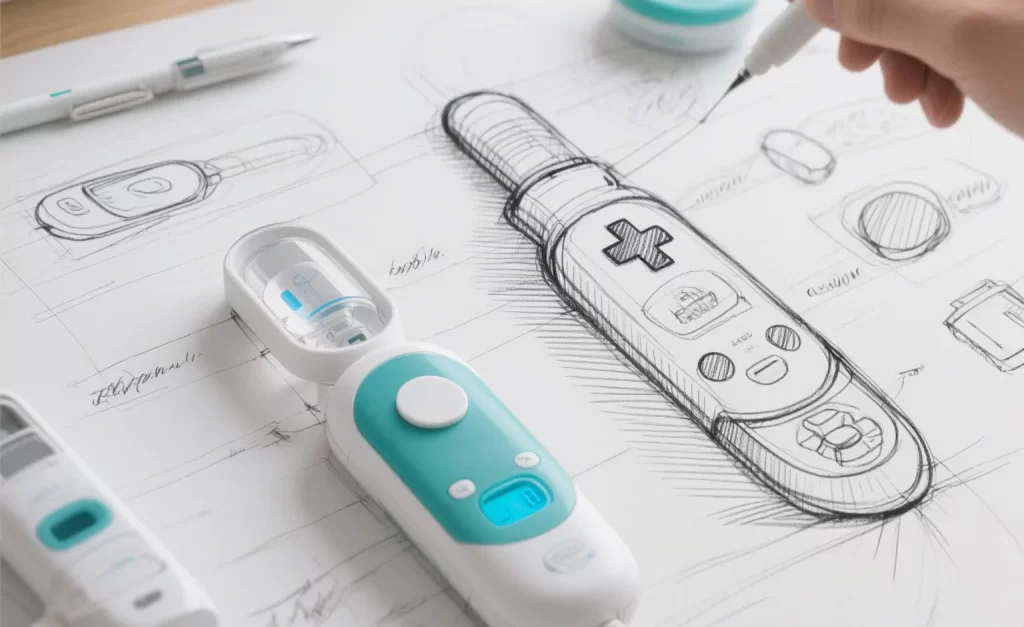
NINEIDEA:Newcomers in industrial design, when you enter this industry with a passion for industrial design, I feel like I see myself from twenty years ago, who spent all night sketching plans in front of a drawing board. This industry is like a forest full of possibilities, with both opportunities and challenges that require overcoming obstacles. The following suggestions, which embody the blood and tears of practice, are hoped to become the guiding torch on your journey forward.
1、 Step out of the fog of the “design myth” and establish a genuine professional understanding
Please let go of those romantic imaginations about “genius designers’ sudden inspiration”. Industrial design is essentially a balanced art of rationality and sensibility, a triangular game of commercial value, user needs, and technological implementation. I was once addicted to cool form design in the early stages of my career, but my plan was rejected due to neglecting the cost of molds. Later on, I gradually realized that the truly impressive design is a solution that can make engineers say ‘this structure is achievable’, marketers say ‘this meets user pain points’, and bosses say’ this cost is controllable ‘.
I suggest that you develop the habit of “three questions” from the first day of employment: What specific problems does this design solve? Does the user usage scenario really exist? What restrictions may be encountered in the production process? Remember, when you adjust the curvature of the surface in front of the computer, the workers in the next workshop are worried about parts with a tolerance of 0.1mm – design is never a castle in the air.
2、 Consolidating Basic Skills: The Necessary Path from “Craftsman of Techniques” to “Thinker”
(1) Hand drawn: Maintain a 30 minute sketching habit every day
Don’t believe the argument that “3D modeling and AI drawing are useless now”. I still keep sketching every day, not copying, but quickly identifying problems and outlining solutions. These seemingly untargeted sketches have become valuable ammunition for you to design related products later on. The essence of hand drawing is not showing off skills, but training observation skills – observing user behavior, observing material texture, observing light and shadow changes – these are the core abilities of designers that AI can never replace.
(2) Modeling: Reject “parameter perfectionism” and focus on engineering logic
Newcomers often fall into the misconception that “the higher the model accuracy, the better”. There was once an intern who spent two weeks adjusting the Gaussian curvature of a surface, but did not know how much trouble this excessive design would bring to mold processing. It is recommended to learn the engineering modules of mainstream industrial software from the beginning, such as SolidWorks mold parting and Creo tolerance analysis. When modeling, imagine yourself as a CNC machining master: is this chamfer convenient for tool cutting? Does the draft angle meet the injection molding requirements? Remember, design that can be implemented is good design.
(3) Materials and processes: Establishing a ‘walking knowledge base’
Every spring and autumn at the Shanghai International Industrial Fair, I take my notebook to visit for three days, recording the tactile sensation of different materials (the delicate frosted texture of anodized aluminum alloy vs the rough granular texture of powder coated steel), the cost range of surface treatment (the unit price of electroplated pearl chromium is three times that of ordinary chrome plating), and application cases of new processes (how the popular carbon fiber weaving process solves stress concentration problems).
These knowledge cannot be learned from textbooks, you need to go into factories, touch real samples, and even collect waste materials of different materials to make specimen books. When you can distinguish different materials through touch with your eyes closed, you have truly crossed the threshold of material cognition.
3、 Project Practice: Establishing Design Resilience in Being Overturned
(1) Cherish the value of ‘failed solutions’
My first landing project was an electric kettle, and the initial plan was overturned 7 times: the first time because the thickness of the handle insulation layer was insufficient, the second time because the temperature controller position did not conform to user habits, and the third time because the packaging size exceeded logistics standards Every time it is rejected, I will draw a “setback progress bar” on my notebook to record the corresponding solutions for each problem. These seemingly failed plans later became the core material for me to write the “Small Appliance Design Avoiding Pits Guide”. Remember: True growth occurs in reflection after a plan is overturned, not in a beautifully presented PPT.
(2) Learn to dance with shackles
Industrial design is never about free creation, but about finding the optimal solution within constraints. A customer once requested to design an intelligent sweeping robot within a cost of 200 yuan, and the team needed to simultaneously address multiple conflicting issues such as battery life, suction, noise, and mold costs. We achieved cost control and functional balance by dismantling competitor components, visiting contract factories, and optimizing structural design. This process taught me that excellent designers can create surprises within seemingly impossible constraints, just like completing a masterpiece within a fixed size frame.
(3) Creating a realistic user profile
Don’t rely on second-hand user research reports, personally observe at the target users’ homes: how do elderly people use bathroom products? How do children hold learning stationery? What unmet needs are hidden in the backpack of a food delivery rider? I once designed a guide cane for visually impaired people and accompanied students in a blind school for three days, recording their strength when touching objects, their body posture when walking, and their sensitivity to sound feedback.
These details made the design plan go from “taking things for granted” to “having warmth”. Remember: When you can say a specific description like ‘Our user is a young mother who earns a monthly salary of 5000 yuan and commutes for 2 hours a day. She needs to open the baby food box with one hand while squeezing on the subway,’ the design is half successful.
4、 Thinking Upgrade: A Key Leap from “Performer” to “Designer”
(1) Developing the ability to define problems
Newcomers often rush to solve problems, but overlook the “correctly defined problems”. A team once received a request to design a more user-friendly garbage bin. Some focused on the appearance, while others improved the opening method. The real breakthrough point was redefining the problem: what users need is not the garbage bin itself, but a more convenient garbage classification solution. In the end, we designed a classification system with intelligent recognition and weighing, matched with an automatic distribution device for biodegradable garbage bags, making the garbage bin an ecological node for garbage classification. Learning to ask ‘what problem are we really solving’ is more important than simply drawing a picture.
(2) Establish a “full lifecycle” design concept
Industrial design should not be limited to product delivery, but should consider the entire lifecycle from raw material extraction to scrap recycling. I participated in the design of an intelligent electronic lock and insisted on using 30% recycled magnesium alloy during the material selection stage. Although it increased the cost by 2%, the product gained high recognition from customers and the market, but more importantly, it promoted the establishment of a closed-loop recycling system for customers. Consumers nowadays are increasingly concerned about the environmental footprint of products, and designers with ESG (Environmental, Social, Governance) thinking will have broader career opportunities.
(3) Embrace ‘anti consensus’ design thinking
When everyone was pursuing ultra-thin smartphones, our team went against the trend and designed a three proof phone with a thicker body for outdoor workers. The additional 10mm thickness accommodated a larger battery, a more sturdy frame, and an ergonomic grip, making it a popular product in the niche market after its launch. Innovation often arises from questioning industry consensus: why must home appliances be white? Why do child seats have to be brightly colored? When you dare to ask ‘what would happen if you didn’t do this’, it opens the door to innovation.
5、 Career Development: Building a Personal moat in Longtermism
(1) Choose ‘Deep Water Zone’ instead of ‘Popular Races’
When entering the industry, facing different fields such as consumer electronics, medical devices, and household appliances, it is recommended to choose a direction that you truly love and have technical barriers to deeply cultivate. I have been working in the design industry for 20 years, dealing with each industry for at least seven or eight years, accumulating experience in the entire process from market demand to user experience. When the trend of smart homes comes, these accumulations enable me to quickly launch a series of smart small home appliances that meet market demand. Remember: Being in the top 10% of a niche field is more valuable than being a mediocre follower in a popular track.
(2) Establish a narrative logic for “design proposals”
When proposing or explaining your design plan, don’t just list the project results, but talk about the thinking process behind the design. In my design presentation, each project includes five sections: “problem discovery – product pain points – user profile – solution ideas – production manufacturing”. We value designers more for having a clear thinking path rather than just visual presentation skills.
(3) Lifelong learning to maintain an ’empty cup mentality’
The speed of change in this industry is far beyond imagination: ten years ago, we were still researching plastic surface treatment, but now we are exploring biodegradable materials; In the past, 3D printing could only make prototype models, but now it can directly produce end products. I still maintain the habit of attending international design exhibitions twice a year, browsing various design websites at home and abroad, and periodically learning a new skill (last year I learned the application of generative AI in design). Remember: when you feel like you have mastered all the necessary knowledge, it is the beginning of being eliminated by the industry, because if you don’t make progress, you are regressing.
The final sincere words
Industrial design is a long marathon, where you will encounter countless setbacks of rejected solutions, confusion of technical bottlenecks, and helplessness of commercial compromises. However, you will also reap the emotions of users (customers) smiling because of your design, the sense of achievement during product mass production, and the pride of driving industry progress.
In the past twenty years, I have seen too many talented designers who were short-lived due to their eagerness for quick success, and I have also witnessed the growth of hardworking professionals into industry backbones. Please remember: the true master of design is not the person who can draw the most beautiful sketches, but the person who can truly improve people’s lives through design.
May you steadily advance on the path of industrial design with reverence and love for this industry. Remember, behind every excellent design lies countless seemingly clumsy attempts – and this is precisely the charm of professional designers.
Let’s encourage together~NINEIDEA Design Studio















